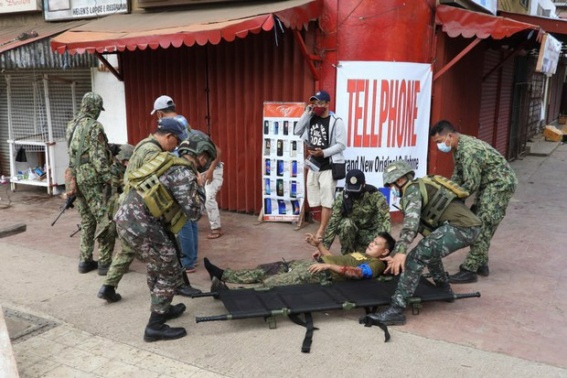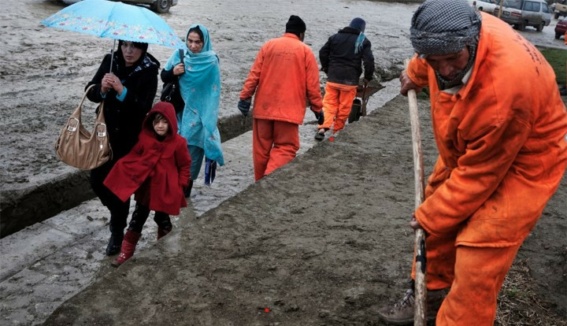The first recorded suicide bombing occurred in Russia on March 13, 1881. Ignaty Grinevitsky, a member of the People’s Will left-wing terrorist group, rushed towards his target Tsar Alexander II and dropped a bomb at the Tsar’s feet, killing them both. But the explosive device was not strapped around his stomach, his legs, or hidden in any part of his body, not unlike the usual tactic that prominent terrorist groups use nowadays. The night before the attack, Grinevitsky had written, “I shall not live one day, one hour in the bright season of our triumphs, but I believe that with my death I shall do all that it is my duty to do.”
The first and largest suicide bombings, however, are thought to have occurred on October 23, 1983, when a vehicle carrying 2,000 pounds of explosives was driven into a U.S. Marine base in Lebanon. The bomber, along with 241 military personnel, died unexpectedly. Seconds later, another bomber targeted the headquarters building of French commandos, killing an additional 58 people.
It was later determined that the bombing was carried out by Iranian-backed Shia militant organizations, which later became Hezbollah, the infamous violent terrorist group. In the 1980s, Hezbollah was responsible for a series of roughly 20 suicide assaults against Israeli and Lebanese soldiers. Due to this series of attacks, it gradually inspired other terrorist groups to use this tactic as a result of successful propaganda, imposition of threat, and massive media coverage. Hezbollah played an important role in the tactics then used by other terrorist groups in today’s day and age.
The United States has made significant progress since then in countering such attacks. Anti-ram perimeter walls, passive and active vehicle barriers, parking standoffs for screening cars, and window coverings such as polycarbonate, durable film, and locking devices have all been deployed by the Department of State to protect U.S. facilities overseas.
Since 1983, insurgency groups from Sri Lanka to Chechnya to Afghanistan have used suicide bombing as a favorite strategy. One indicator of this expanding predilection is the number of attacks, which increased from one in 1981 to more than 500 in 2007. This has become a significant and more powerful technique, particularly for ISIS and Al-Qaeda. Nonetheless, since 2003, suicide bombings have just about exclusively been perpetrated by Islamic groups.
A Martyr and a Suicide Bomber
A religious martyr, according to the conventional definition, is someone who is executed for their religious views, such as Saint Euphemia, who was martyred in AD 303 for refusing to forsake Christianity and participating in Ares sacrifices. Each of these individuals voluntarily died as a result of their refusal to renounce their faith in the face of torture, torment, or the prospect of death. When viewed through the lens of choice theory (utility), the martyr chooses to hold on to their principles and beliefs, implying that their functional form must be such that the advantage of holding on to their convictions outweighs the value they place on their own life. So, how is martyrdom interpreted by Islamic groups and why do they use this term?
Both phrases are used interchangeably, especially among Islamic groups. Explicitly put, a suicide bomber thinks that if they follow their religious beliefs to the fullest, they will be granted infinite utility, a place in heaven, and a great degree of pride in their afterlife. A martyr, on the other hand, may expect a good life after death as a result of their devotion and determination to stand for their religious beliefs. Unlike Islamic groups, they do not seek to inflict or cause death on others. A martyr is willing to die while preserving their faith, whereas a suicide bomber accepts death while believing that the more harm they wreak, the more they will be honored by God in the afterlife.
The choice is the actual distinction between the two. The martyr is forced to choose between life and death, with the probable inclination to survive, whereas the suicide bomber chooses to willfully end their own life and murder as many others as possible from a position of relative safety. The final aspect of this decision is what distinguishes suicide bombers from others: the desire to cause the deaths of others as part of their very own end-of-life decision.
The phrase “Allahu Akbar” is shouted by a suicide bomber before he detonates himself. It is both disheartening and enraging that terrorists have tainted our sacred language in a way that leaves those who aren’t Muslim terrified of common, beautiful phrases like “Allahu Akbar,” which simply means “God is the greatest,” no different than the use of “praise God” by Christians,” Rabia Chaudry said, a Pakistani-American attorney. It is saddening that the term that was previously said during Muslim celebrations can now be associated with an evil act.
How Effective is Suicide Bombing?
To begin with, the findings strongly suggest that a suicide bomber does not require extensive training to carry out the crime. Second, a suicide bomber may easily blend in with the crowd, and third, an explosive device does not cost a terrorist cell a hundred dollars; in fact, they can construct their own bombs using materials found in their barracks. Furthermore, suicide bombings can result in large casualties with little to no effort on the part of the perpetrators.
Terrorists are deadly, adaptable, and resourceful. A bomb-wielding individual is significantly more dangerous and difficult to resist than a timed device set to detonate in a public place. This human weapons system may make last-minute adjustments based on the ease of approach, the number of individuals present, and the security systems in place.
Despite two years of declining civilian losses from suicide strikes, the number of civilians killed in suicide bombings in Afghanistan increased in 2021. Afghanistan remained the country most affected by suicide attacks, accounting for 65% of all civilian deaths caused by suicide attacks worldwide. According to AOAV data, there have been 13,652 recorded suicide bomb assaults throughout history: four in Tsarist Russia, seven in China prior to WWII, 7,465 by Japan throughout WWII, 5,430 between 1974 and 2016, and 746 in 2017 and 2021.
Conclusion: Countering Suicide Attacks
To counter and deter suicide bombing incidents, Western policies must recognize the diversity of Islam, Islamism, and Jihadism, and even the ensuing internal conflict in the Islamic world over whose narrative will prevail. In order to suppress the extreme challenge, the West must support the moderate portions of this varied group.
Also, increasing surveillance operations to study people who have a history of committing suicide attacks and understanding their networks, such as friends, families, and peers. It’s also a roadblock to developing policy recommendations for stores or shops where terrorists might readily purchase materials to make an improvised explosive device.
The underlying issues that give rise to terrorist attacks must be addressed concurrently in order to decrease the incentive for such acts throughout the long run. National inter-service and collaborative international partnerships are key components of a comprehensive plan to combat suicide terrorism that should be implemented simultaneously.
Intelligence plays a critical role in averting acts of suicide terrorism from occurring in the first place. When major events occur, security briefs and digital reports should be created, especially in nations with limited resources and security agencies. Remember that a suicide bomber’s goal is to cause the highest degree of destruction possible.
Also, security officials should consider advancing social media strategies and using it as a tool to promote safety, security, and peace. Considering that social media has been rampant and successful tool for terrorist groups in recruiting members, counterterrorism efforts should also capitalize on this resource. For example, government agencies, think-tanks, and counterterrorism-oriented organizations must also continue creating symposiums, webinars, and trainings for the public, to inspire and inform people on effective strategies to combat terrorism. Ultimately, to keep up with the advancements of terrorist strategies, authorities and social media platforms must modify their counter-terrorism measures to address these foreseen issues.
Kristian N. Rivera, Counter-Terrorism Research Fellow










